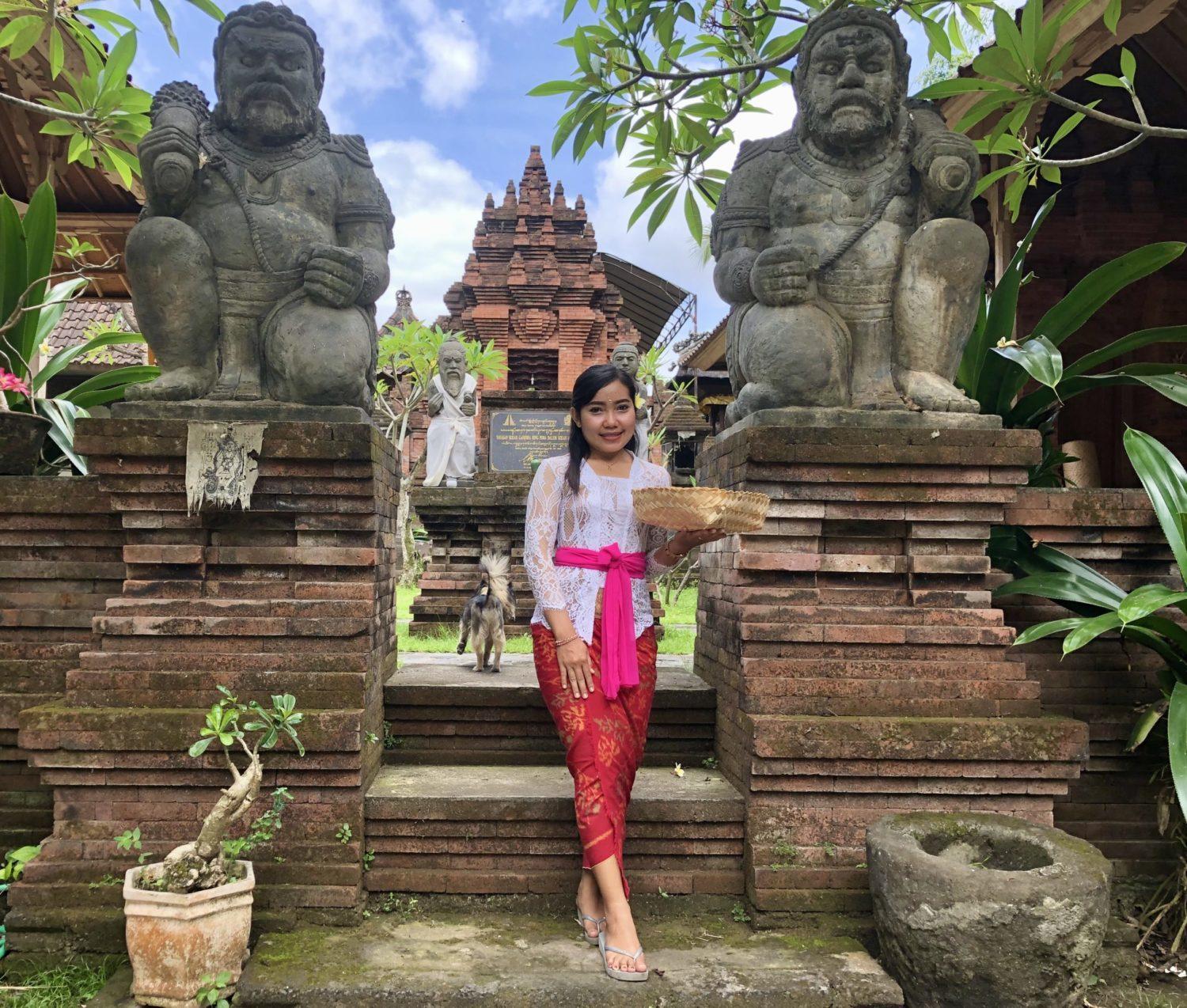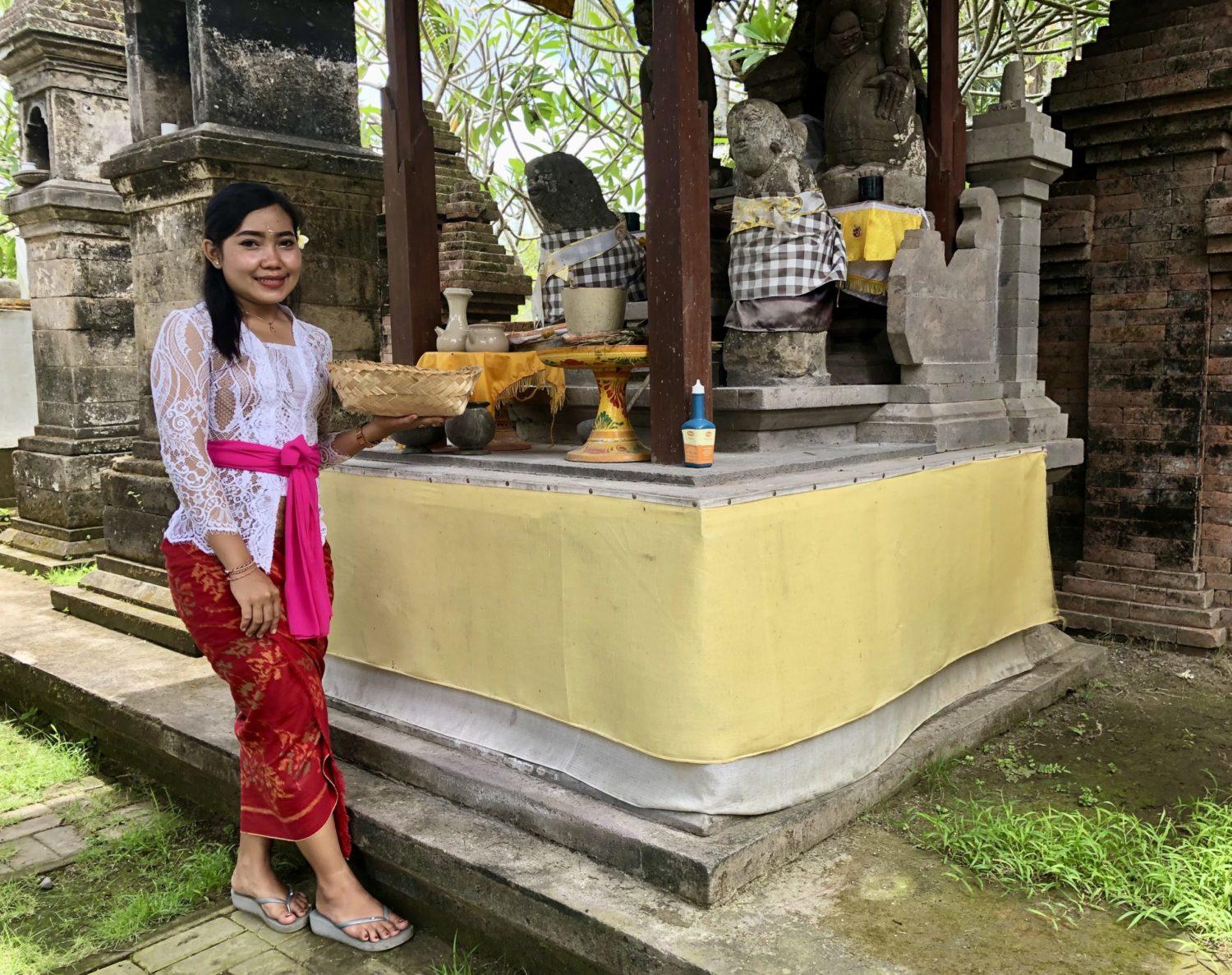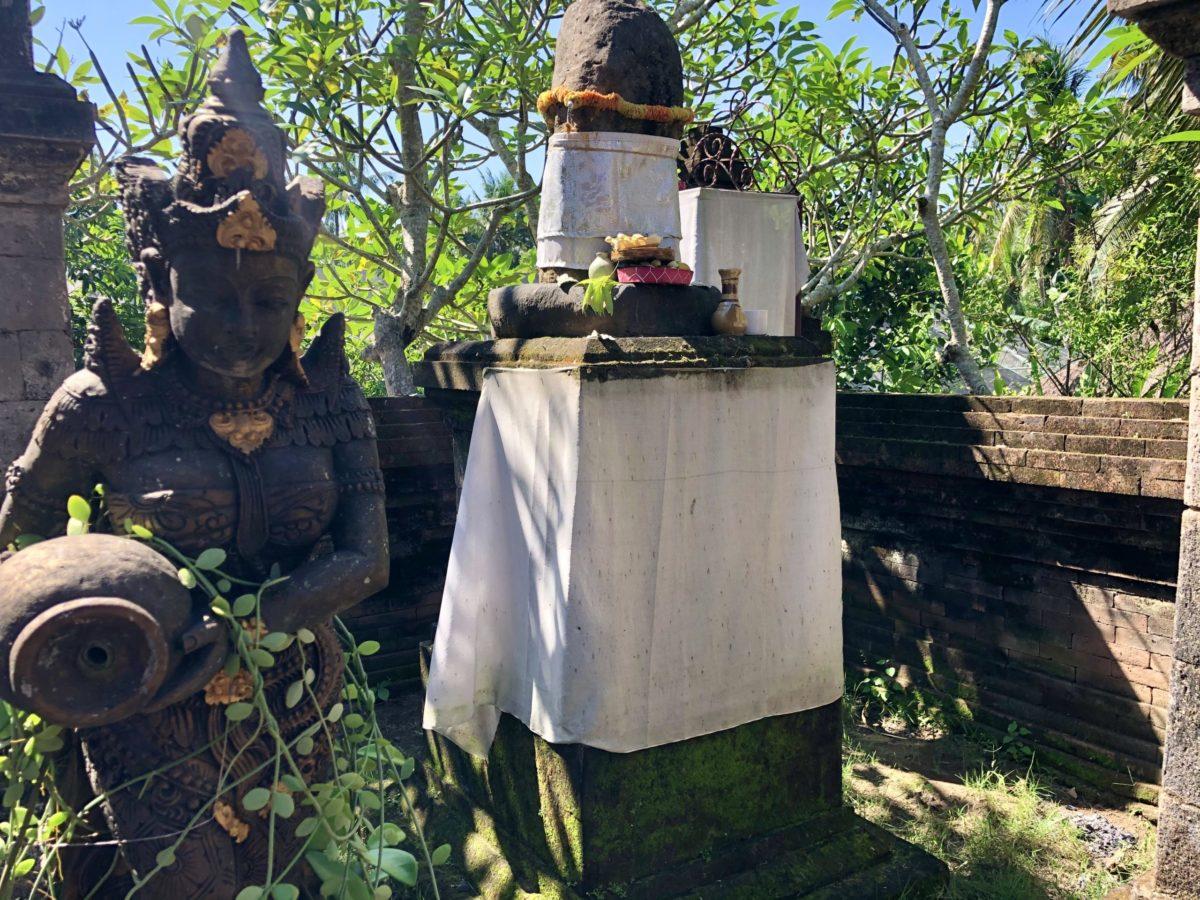A guided tour of the ancient family temple at Keramas Sacred River Village includes a description of numerous statues in three courtyards. Built in the 7th century, the temple is the spiritual epicenter of the property, and has been in the family for many generations. A royal Balinese temple is laid out according to ancient spiritual design. There are three gates and three sets of guardians, leading into three courtyards. The first courtyard is about nature and our relationship the the environment. The second courtyard is about humanity and our actions in on our life earth. The third courtyard is about spirit, ascension, and union with God. These are laid out in succession, and ceremonies take place in the sacred inner courtyard. In Hindu the three courtyards are called bore Bhur, Bwah, and Swah.

This important Shiva Buddha Temple reflects ancient pre-Hindu traditions of Bali which recalls a timeless union between Buddhism and Hinduism from prehistoric times. Although Hinduism arrived in Bali in the 1st century CE, Balinese have guarded their early traditions carefully with very little change. This early religion is sometimes called “Tirtha” meaning “sacred”. It is infused with Shamanism, Animism, and early Buddhism.

The temple is built in the style of Balinese royalty, intended for special ceremonies for the high caste kings and queens and their families, who were not allowed to mix with common cremation grounds. The inner shrine for the ceremony is called the SEKAH, which means purification of the soul of the dead.
Human life takes place in the physical world of duality. For example the right hand is good, and the left hand is evil. When you put your two empty hands together, you have a real human being. In a real human life everything is balanced: good-bad, body-soul, male female, humanity-spirit, light-dark. The power of a human is to ask for help to create your life encompassing good and evil. When we put our empty hands together we come to zero and balance.

Everything in life is meant to serve and glorify the ultimate oneness with spirit. At the end of life, our soul can release the physical body and unite with the highest God. After death it is said the the soul waits for the body to join the five elements in the earth. That is why ceremonies after death are carefully observed, and dissolution of the body is an important step in freeing a relative who has passed on. When the body is cremated and dissolved once again with the five elements, the soul can return home. During a ceremony a priest chants to help us connect to God and spirit. This opens a portal that we can pass through into a higher level of spirit.
There are six steps to a ceremony with simple hand gestures.
- We begin putting empty hands together to unite heart and mind.
- We put two hands together and raise them above the head to summon the spirit and the pure God within us.
- We put a white flower between the two hands and lift our palms together over the head as an offering.
- We put different colored flowers in our palms and lift them to summon the goddess spirits of the five directions.
- We once again raise our empty palms together to the forehead.
- The last step is Tirtha, to purify the soul, as a priest splashes a few drops of holy water on us.

In the corner of the third temple courtyard is the sacred Lingga and Yoni. This is an ancient stone image representing the male staff of life and the mother goddess receptacle. It symbolizes creation, male – female, Yin Yang, beginnings, birth, dissolution, impermanence, and all of life.
Keramas Sacred River Village offers accommodations, classes and events dedicated to immersion in beauty of Bali and the forces of Nature. For further information: Website: keramassacredriver.com. Email: info@keramassacredriver.com


